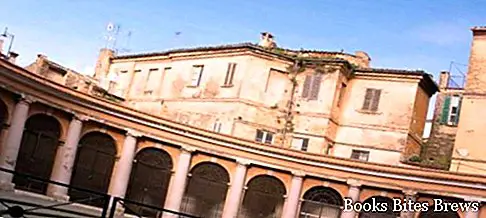What to see in Chieti, itinerary including the main monuments and places of interest, from the theater to the Roman baths with a succession of churches, from the Baroque San Domenico to the Cathedral dedicated to San Giustino.
Tourist information
The city of Chieti, which stands on the hill located on the right bank of the Pescara river, was called Teate in Roman times.
Later it passed under the government of various lords until it came to that of the Bourbons.
A visit to the remains of the Roman period of Teate, the ancient name of the city, including the theater, the temples and the thermal baths dating back to the 1st century BC, is particularly recommended.
Along Corso Marrucino there are the baroque church of San Domenico, the diocesan museum and the Marrucino theater, as well as the Martini Bianchi palace which houses the Barbella art gallery where works of Abruzzo artists are preserved, the ancient fish market of Chieti is also interesting.
What see
The cathedral of San Giustino, rebuilt in the 11th century, has an interior with three naves and is flanked by a bell tower adorned with double lancet windows with double central columns, by Bartolomeo di Giacomo of 1335, while the bell cell of 1498 is due to Antonio from Lodi.
Dedicated first to San Tommaso and then to San Giustino, the cathedral of Chieti was renewed for the first time by Bishop Theodoric I in 840 and, subsequently in the eleventh century, the period to which the current structure with the underlying crypt dates back.
Largely rebuilt in the fourteenth century and remodeled in the sixteenth century, the building had to undergo substantial renovations in the eighteenth century.
The current facade and the right side are from 1900.
The construction of the bell tower was started by Bartolomeo di Giacomo and finished by Antonio da Lodi in 1498.
The church portal has a lunette with a beautiful mosaic by Biagio Biagetti, while in the main altar there is a marble frontal from 1769 depicting San Giustino hermit who receives episcopal insignia from the people of Teate.
Recommended readings- Giulianova (Abruzzo): what to see
- Abruzzo holidays: travel between the Apennines and the Adriatic Sea
- Roccaraso (Abruzzo): what to see
- Abruzzo: Sunday day trips
- Sulmona (Abruzzo): what to see in the homeland of confetti
The eleventh century crypt has two transverse naves divided by five cruciform columns and decorated with frescoes from the thirteenth and fourteenth centuries, which act as a backdrop for the 1432 marble ark containing the relics of the saint.
The crypt leads to the beautiful Suffragio chapel of the Archconfraternity of Monte dei Morti, where seventeenth-century stuccoes stand out.
In addition, the Cathedral Treasury houses valuable artifacts, including ancient sacred furnishings and various works of art.
Many archaeological finds are preserved in the National Archaeological Museum, including the Italic statue of the Warrior of Capestrano and the funeral monument of Lusius Storax.




